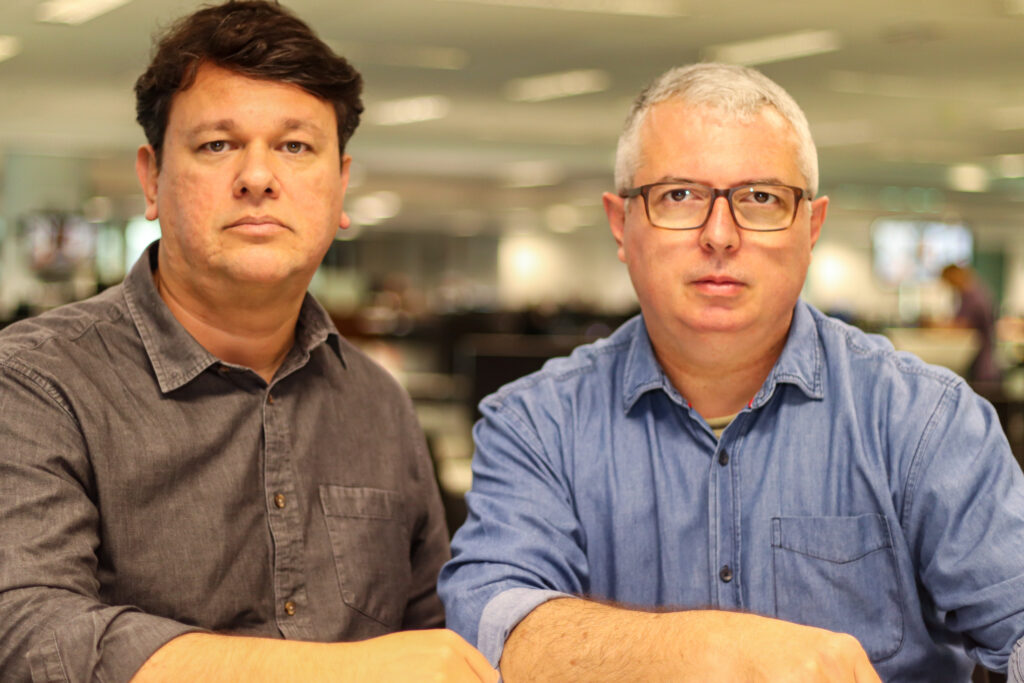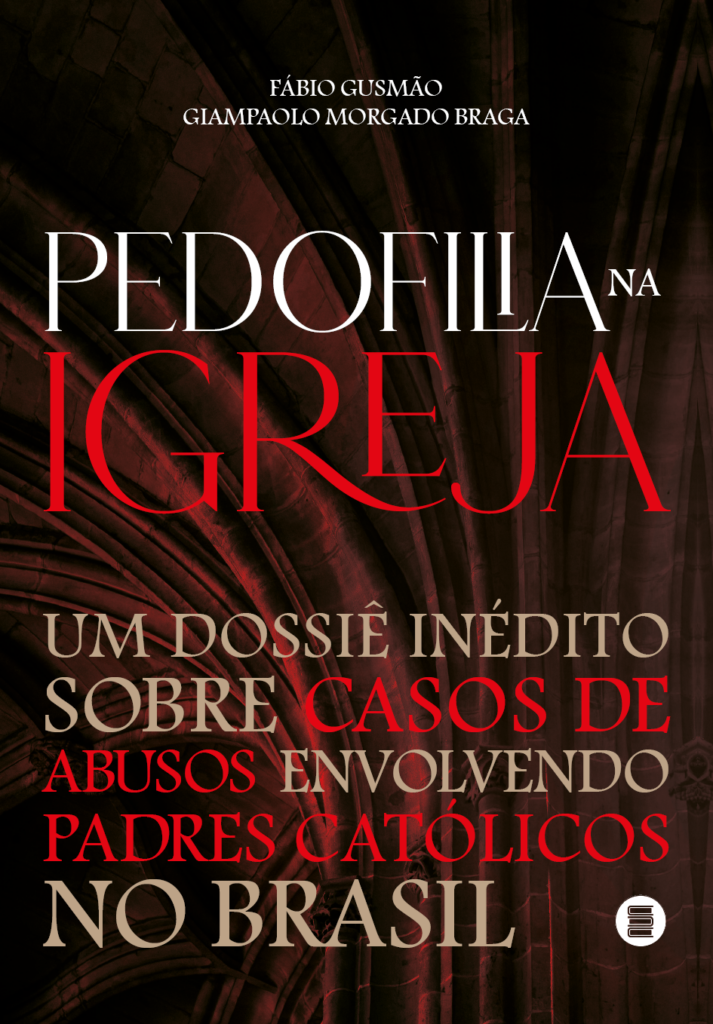Despite being home to more Catholics than any other country in the world, Brazil knows little about the crimes committed by its clergy. While other countries — such as the United States, Portugal, Argentina and Chile — have had major media scandals related to sexual abuse committed by priests, which have increased public attention on all their priests, in Brazil, the accusations involving the Catholic Church have remained isolated, without any systematic effort of synthesis.
This gap begins to close this month with the release of the book "Pedofilia na Igreja: Um dossiê inédito sobre casos de abusos envolvendo padres católicos no Brasil [Pedophilia in the Church: An unprecedented dossier on abuse cases involving Catholic priests in Brazil]" (published by Máquina de Livros), by journalists Fábio Gusmão and Giampaolo Morgado Braga. The investigation, which took more than three years to be completed, presents for the first time an overview of the cases of sexual abuse committed by priests against children and teenagers in Brazil who have been brought to Justice. It promises to be a fundamental step in unveiling the real depth of the problem.
Their investigation reveals that, in the 21st century, at least 108 members of the Brazilian clergy have been accused, indicted, charged, convicted, or become defendants for involvement in the sexual abuse of 148 children, adolescents, or people with intellectual disabilities. The book presents all the cases identified, and discusses in detail — sometimes very disturbingly — about 20 of them. In addition, the work analyzes how complaints are usually handled by the Church and by the Justice system, discusses actions taken by Pope Francis to address the problem, and presents international experiences in combating pedophilia in the Church.
Although the investigation goes further than anyone else has ever gone in making public the issue of sexual abuse in the Catholic Church in Brazil, the authors, who specialize in public safety coverage and have worked together for nearly 20 years at O Globo newspaper in Rio de Janeiro, are under no illusions and believe abusive practices are much more widespread than they have managed to uncover.

The authors of the book, journalists Fábio Gusmão and GIampaolo Morgado Braga, at O Globo newsroom in Rio de Janeiro (Photo: Courtesy)
Since the duo restricted themselves to cases in which lawsuits have been filed, non-judicialized suspicions were not considered. Moreover, access to information about the lawsuits is itself restricted, because cases involving minors are under court secrecy.
In the book's preface, American Anne Barrett Doyle, co-director of the Boston-based organization BishopAccountability.org, states that "it is reasonable to assume that hundreds and probably thousands of child molesters in the Brazilian priesthood remain unidentified to the public." The authors hope that with more visibility of the issue, society will promote a wider discussion on the topic, and other victims will come forward to seek justice and an end to the abuse.
"There are many more cases, both of other victims of the same priests we mention, and victims of other priests, in cases that have never been publicized by the press. Since the book launch, information has already begun to emerge of cases of other priests, including cases that never reached either the police or the courts," Morgado Braga told LatAm Journalism Review (LJR). "What we have found is just the tip of the iceberg."
The cases investigated were discovered through a search of more than 25,000 pages of documents, including state, federal, and higher court cases, police inquiries, press feature stories, and foreign databases. The initial list of those indicted had 160 names, but priests whose cases have already lapsed were not discussed. The journalists also conducted dozens of interviews with victims and relatives, accused or convicted priests, church members, prosecutors, lawyers, and police officers, among others.
The main obstacle the journalists encountered in collecting the cases was the secrecy of the courts. Because the victims were minors, the cases were not made public, which makes the investigation much more difficult. This difficulty was circumvented by using small clues, such as public documents containing the initials of the accused, or the lawyers’ names, which allowed them to gather evidence and put together a jigsaw puzzle.
"Sometimes we got to the cases because of failures in the registration system, such as a registry office that registered the wrong process and made it public, or higher courts, such as the Superior Court of Justice, that mistakenly left the documents public. It was a brutal work of patience," Gusmão told LJR. “We also discovered several lawsuits through compensation claims. As these are civil cases, there is no judicial secrecy."
The pair is critical of the secretive way in which the processes run: while they protect the victims — which they consider fundamental — they also end up covering up possible abusers.
"When you protect the child, which is absolutely necessary, you end up protecting the abuser as well. You hide the abuser, preventing other victims from coming forward and saying they were abused too," Morgado Braga said.
The research for the book started right at the beginning of the coronavirus pandemic, so most of the interviews had to take place remotely. Most of the victims preferred to hide their identities and appear in the book under pseudonyms, although there are also interviewees who decided to talk under their real names as part of a healing process.
"The first challenge we had was finding the victim. Then convincing them of the importance of talking about it. It's a very complicated situation, because there are many layers of shame. There is the shame of the sex crime itself, the shame of having trusted the priest, of having experienced abuse, or else, of parents who let this happen to their children," Morgado Braga said.
A young man, now 29, abused when he was 11 in the Federal District, was one of the few who wanted to give an interview. He told the authors that he did this to serve as an example to empower other victims.

The cover of the book 'Pedophilia in the Church: An unprecedented dossier on abuse cases involving Catholic priests in Brazil'
"He told us that he couldn't read his own story in the book until the end, because he relives everything he went through. At the same time, he understands that showing people how he was able to rebuild himself will make others feel strong enough to also save their lives," Gusmão said. "Because he went through hell, but there is restoration. He is able to get back on his feet and find love."
The victims’ profile is the same as has been recorded elsewhere in the world. The frequency is higher in small cities, although there are also cases in São Paulo, the largest city in the country. The victims are mostly from disadvantaged social classes and male, in a ratio of two to one in relation to girls. The targets’ ages ranged from 3 to 17 years old.
Just as it was verified in the world's most famous journalistic investigation into pedophilia in the Catholic Church — the one published by The Boston Globe in 2003 that was later adapted into the 2015 film "Spotlight" — the authors verified cases of cover-up by the Church's leadership, which, instead of bringing the cases to criminal justice, transferred priests from parishes.
One of the cases of transferred priests is that of Father Tarcisio Tadeu, the first one described in detail in the book, whose cruelty is nauseating. Friar Tarcisio had written a manual with methods to abuse children, including approach techniques, preferred targets, and strategies to disguise the crimes. Another covered-up priest is Paulo Back, against whom there have been countless accusations and suspicions over decades.
The convictions of priests averaged 12.4 years in prison, but even then prison sentences were rare, and most of the culprits left jail before the end of their sentences. Together, the claims for compensation reached R$150 million [US $31 million], but by 2022, the amount actually paid totaled less than R$1 million [US $208 thousand].
Although it has sometimes helped abusers escape, the Church's legal defense strategy is usually to deny that it has responsibility for the crimes, attributing them solely to priests.
"Most of the time, the Church tries to disassociate itself from the cases. It says it has no authority over the priest, and cannot answer for what he did. Almost always the line of defense goes that way. Many times, the Church loses and ends up having to pay compensation, but in some cases it manages to disentangle itself," Gusmão said.
At the end of the book, the authors discuss the initiatives taken by Pope Francis to combat pedophilia in the clergy. In addition to listening to experts inside and outside Brazil, Gusmão and Morgado Braga also spoke with people who try to combat abusive practices from within the Church.
In Brazil, there are fewer initiatives to combat pedophilia than outside the country. The Archdiocese of Boston, for example, actively exposes abusive priests. But, even so, there are people committed to this cause, such as individual priests and the group Lux Mundi, aimed at preventing violence in the ecclesial environment.
The authors show some sympathy for Pope Francis, but also skepticism about the possibility of radical changes in the near future.
"From the very beginning of his papacy, Francis has taken on the issue of pedophilia within the Church as a central issue. He has resolved to change canon law in an attempt to change the Church's stance," Gusmão said. "Except we know this culture is one of the most difficult things in the world to change. A decision that is made in the Vatican does not necessarily reach a small diocese in the interior of the country. The Church is very large and widespread, and we notice resistance from bishops who are lower in the hierarchy."